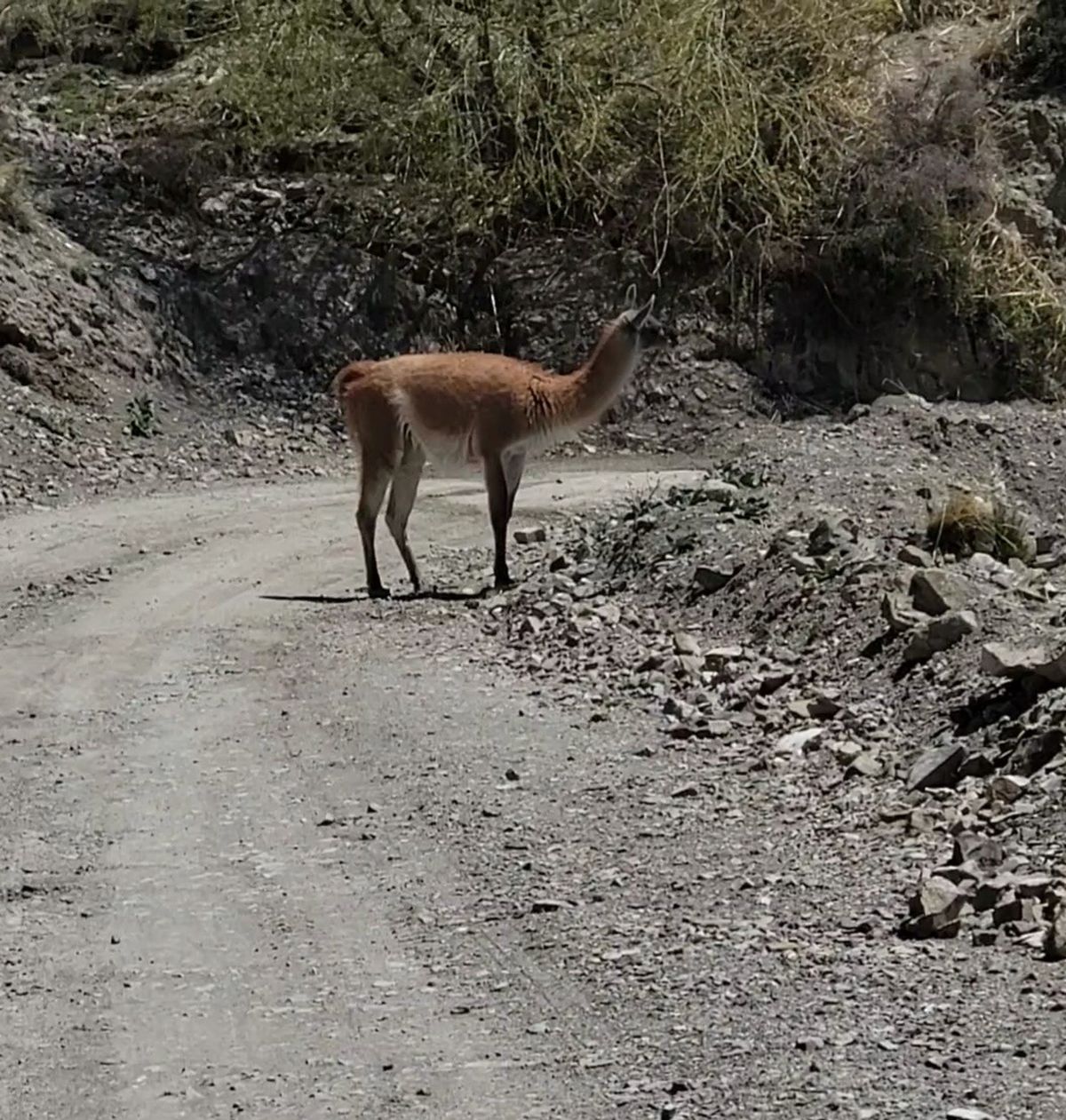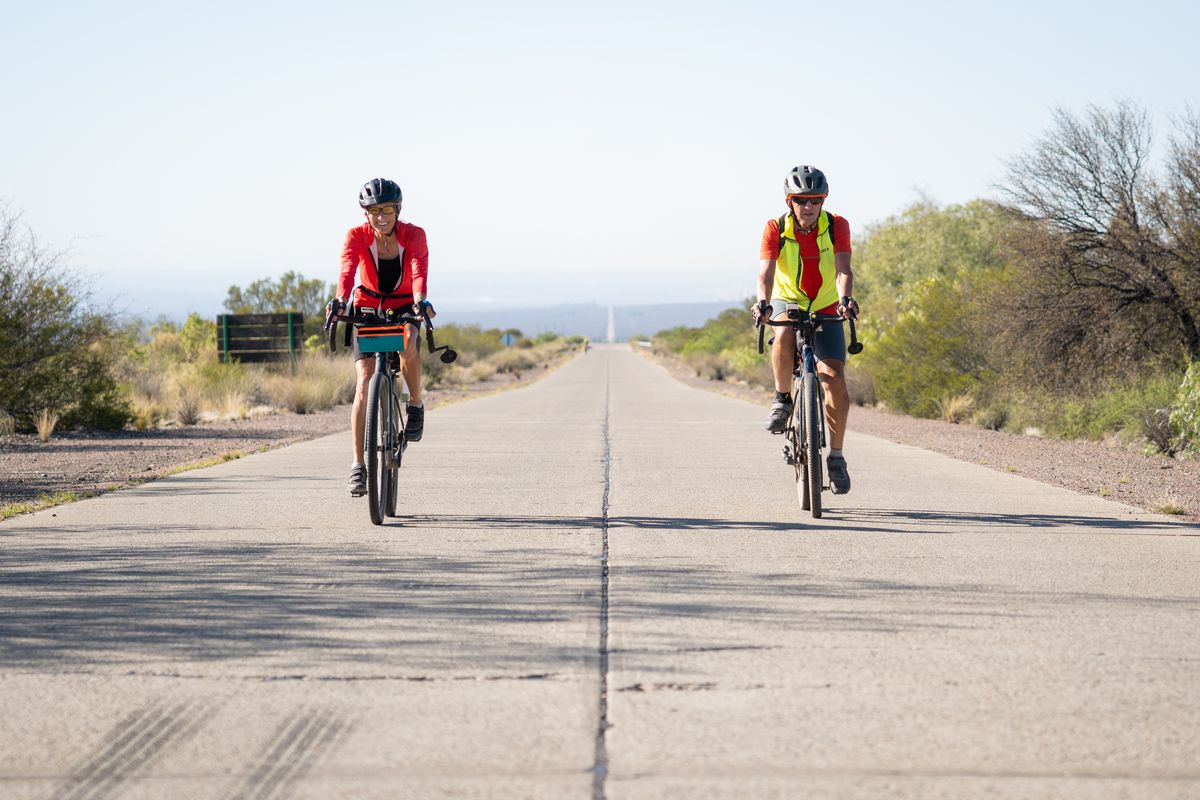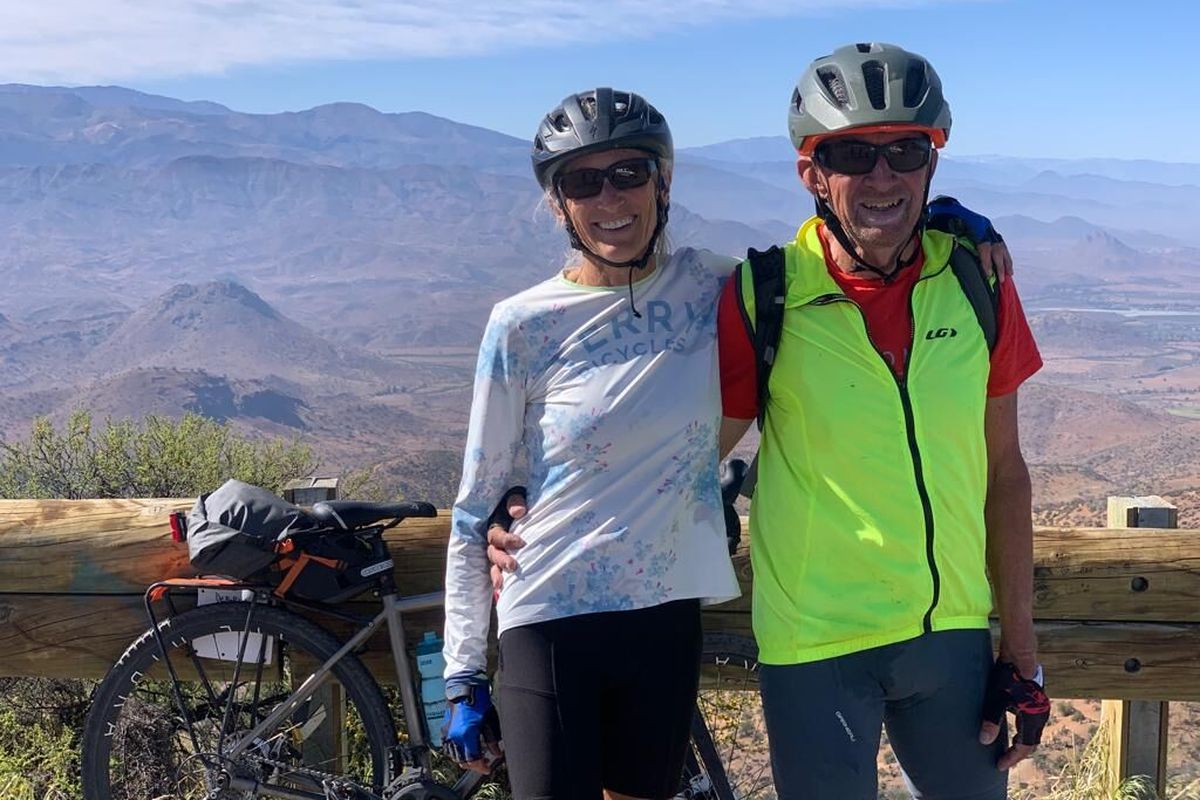‘If you rest, you rust’: Retired Spokane doctor tackles 3,000 mile bike adventure in South America
Jim Skeel and Barbara Smit on the road in the grasslands of Argentina. Smit rode a Specialized Diverge gravel bike. Although there were paved sections of road much of the route was gravel riding, she said. (Courtesy of Barbara Smit)
When Barbara Smit retired in 2015 she lost her equilibrium.
Literally.
The then 61-year-old, who worked as an eye doctor in Spokane, was diagnosed with a rare inner-ear condition which caused spinning and vertigo to the point where the life-long athlete had to hug the floor for hours. Eventually she had part of her inner ear removed, a surgery for Ménière’s disease, which helped but was no magic bullet; she spent months using a walker.
“I thought I’d never be able to do stuff again,” she said, noting that to this day her balance is shaky.
She wouldn’t have been alone.
Those who retired early (defined as before age 65) are 11 % more likely to die, according to an 18-year-study published in 2016. Other studies have shown a general decrease in health after retirement. And while the research isn’t clear-cut (another study found that if you were already healthy, retiring early increased your life expectancy, for instance) there does seem to be some truth in a saying Smit’s 81-year-old husband loves repeating: “If you rest, you rust.”
And so Smit, “decided I was not somebody who could watch daytime TV.” Instead she “pushed and pushed” to rehabilitate and regain her former mobility. All that pushing culminated this fall at the top of an Argentinian pass after an 8,000-foot bike climb up a dirt road in the Andes Mountains, all of which was part of a 3,000-mile, 62-day bike tour through South America. The tour featured gale-force winds that nearly swept Smit and her bike away, 18 hours of nonstop rain, sore butts, “highly variable camping,” including one memorable night in a barnyard, and 200,000 vertical feet of climbing.
“I almost couldn’t do this trip,” Smit said.
But she did do it and as she crested the pass and looked down into Chile, the suffering and doubt melted away.
“This to me is joy. I was just out there. There were no people. It was wild country,” she said. “You can’t have a day like that without the days around it to get you there.”
Adventure guiding
Although Smit was alone the moment she summited the pass, she wasn’t unsupported. Some distance behind her rode a cyclist, an employee of TDA Global Cycling, a tour company that focuses on supported bike tours throughout the world.
Since Smit retired, she and her husband Jim Skeel, a retired Spokane judge, have done a number of tours with TDA, including biking from Paris to Istanbul. However, the South America trip was the longest, and hardest expedition to date. And while TDA carries rider’s gear and a TDA chef prepares breakfast and dinner, riders aren’t babied through the adventure. They set their own pace, pack their own bags, pitch their own tents and are encouraged to ride through weather, of all varieties.
That included nonstop rain and Patagonia’s infamous winds. And while it’s always possible to hitch a ride in one of the TDA trucks, Smit said everyone there tried their best to push through.
Over the course of the two-month trip, riders averaged 65 miles a day, with some racing through the miles and others setting a more civilized pace. Breakfast was served at 7:30 a.m. and dinner around 6 p.m. with sandwiches and bars for lunch. Eating was a primary concern, Smit said, noting that everyone lost some weight. Smit’s husband, Skeel, only did about half the ride, which was the plan all along, she said.
Knowing that if something bad happened – an injury or a major mechanical issue for instance – there was support nearby provided “so much freedom,” she said.
“We just fell in love with these trips,” Smit said. “We also hate them. I want to be really clear there is always a point along the way where you think, ‘Why, why do I want to do this?’ Because you’re out there no matter what the weather is. And sometimes your legs just hurt. But the payback is you also have days that are more fabulous than you can imagine.”
“One wild and precious life”
But why?
Why suffer, for a price, when a car – not to mention a plane – could have carried Smit and her husband throughout South America for a fraction of the effort? Smit doesn’t know exactly although it was a constant topic of conversation during the trip.
What sort of psycho signs up for something like this?
“Partly people who do it do have a masochistic streak,” she said. “If you suffered to get there it’s better. Partly it makes you feel alive. Our lives these days can be so physically easy and some of us find that doing things that push actually make you appreciate things more. Feel more alive.”
That intuitive diagnosis is supported by science. Physical struggle and stress is good for health, at least in moderation. In his 2021 book “The Comfort Crisis” author Michael Easter lays out the scientific evidence showing how discomfort mitigates a grab bag of mental and physical diseases.
“We are living progressively sheltered, sterile, temperature-controlled, overfed, underchallenged, safety-netter lives,” he writes. “And it’s limiting the degree to which we experience our ‘one wild and precious life,’ as poet Mary Oliver put it. But a radical new body of evidence shows that people are at their best – physically harder, mentally tougher, and spiritually sounder – after experiencing the same discomforts our early ancestors were exposed to every day.”
That aligns with Smit and her husband’s experience.
These adventures give their days and weeks structure. It gives them something to talk about, and suffer through, together. And the actual activity reminds them of the finer things in life: a hot shower, clean clothes, a soft bed.
Worth any price?
There remains an uncomfortable reality. The price.
For the ‘luxury’ of suffering, Smit and her husband paid about $10,000 each. Not to mention the cost of the bikes and the travel. The specialized clothing. The flights. It all adds up and is an uncomfortable reality of outdoor recreation, and the broader premise that some suffering is necessary for physical and mental vitality.
If you’re eking by, paycheck to paycheck, or if early retirement – much less any retirement – is a pipe dream, then the idea of spending money to be uncomfortable may sound ridiculous.
There isn’t an easy answer there and Smit is aware of this reality. However, she points out that there are other, cheaper, ways to find adventure. Bike touring through the northwest offers plenty of surprises and she knows a number of retirees who do so.
“It just depends on how much you’re willing to do on your own,” she said, adding later “These trips are expensive, but for the fact that they’re several months they’re not as much as you’d think.”
What’s next?
Smit’s tour through South America ended on Dec. 2, six days before the rest of the group. That was because she caught COVID-19 and had to spend seven days in quarantine. And while she didn’t finish the entire route was disappointing, she said in the end the final destination, or goal, didn’t matter so much.
Most likely that was her last long trip of that nature, she said. Now, she and her husband are planning to do shorter, totally self supported bike trips out of their camper van. And while the distances may be shorter and the weather more mild, the underlying desire remains: maintain her equilibrium through struggle.
“If you suffered to get there, it’s better,” she said.







